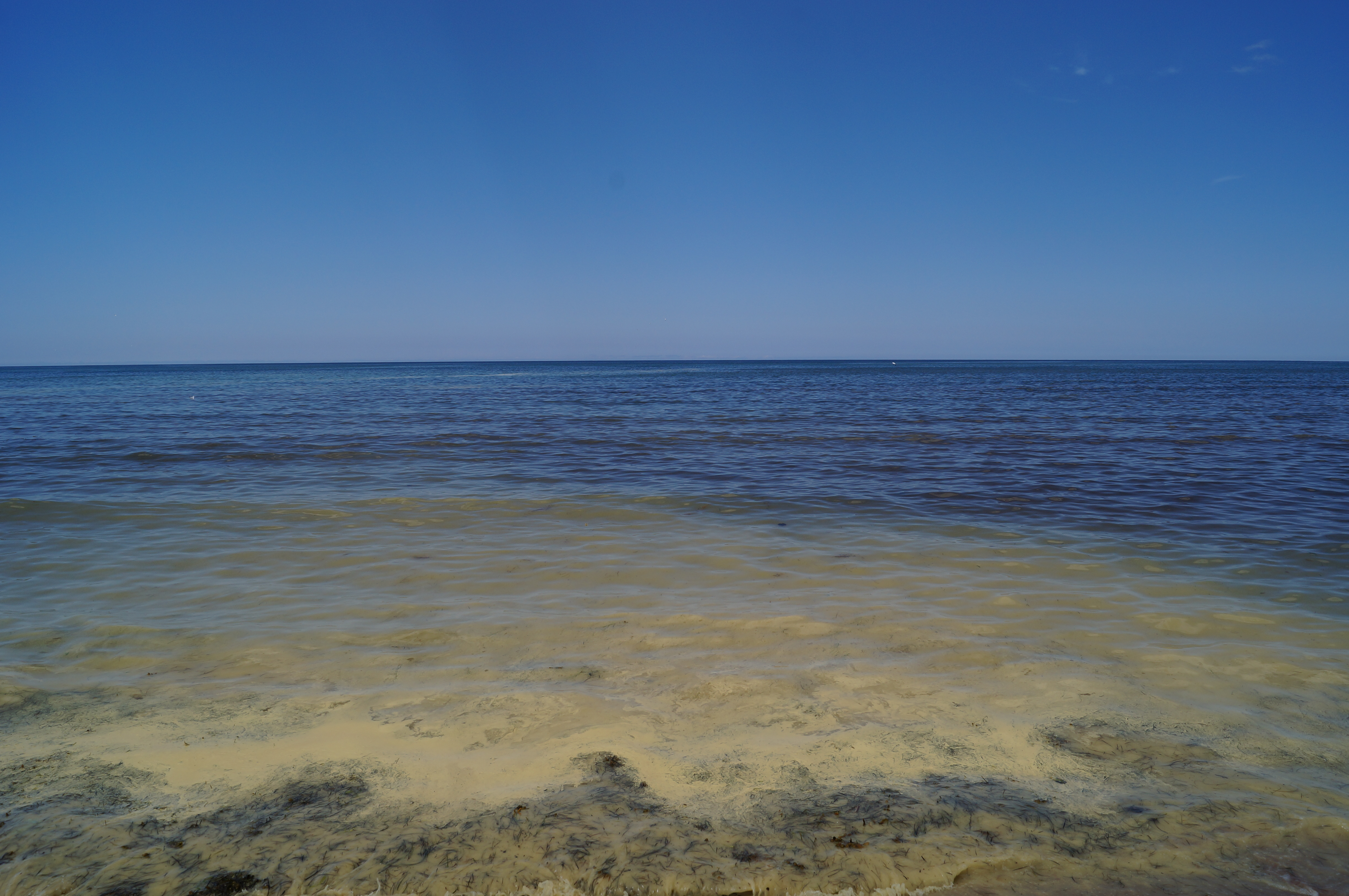Red, Green and Brown: What's in the Water?
Each year people see things in streams, ponds and estuaries that cause concern, but this does not mean that the water is polluted. Often, there is a natural cause for these conditions.
If you are concerned about water quality because of something you have seen, contact the Department at (902) 368-5044. If you suspect that a problem may need immediate attention (like a chemical or petroleum spill, or dead or dying fish/shellfish), contact Environmental Emergency toll-free at 1-800-565-1633.
Some of the strange, but natural, things in surface water include:
Foam
Foam can develop naturally in water. Decaying plants, leaves, and animals (organic matter) act much like soap. The organic matter allows the water to mix with air. This creates bubbles and foam in areas where the water is moving quickly, such as below waterfalls, or where waves break on the shore.
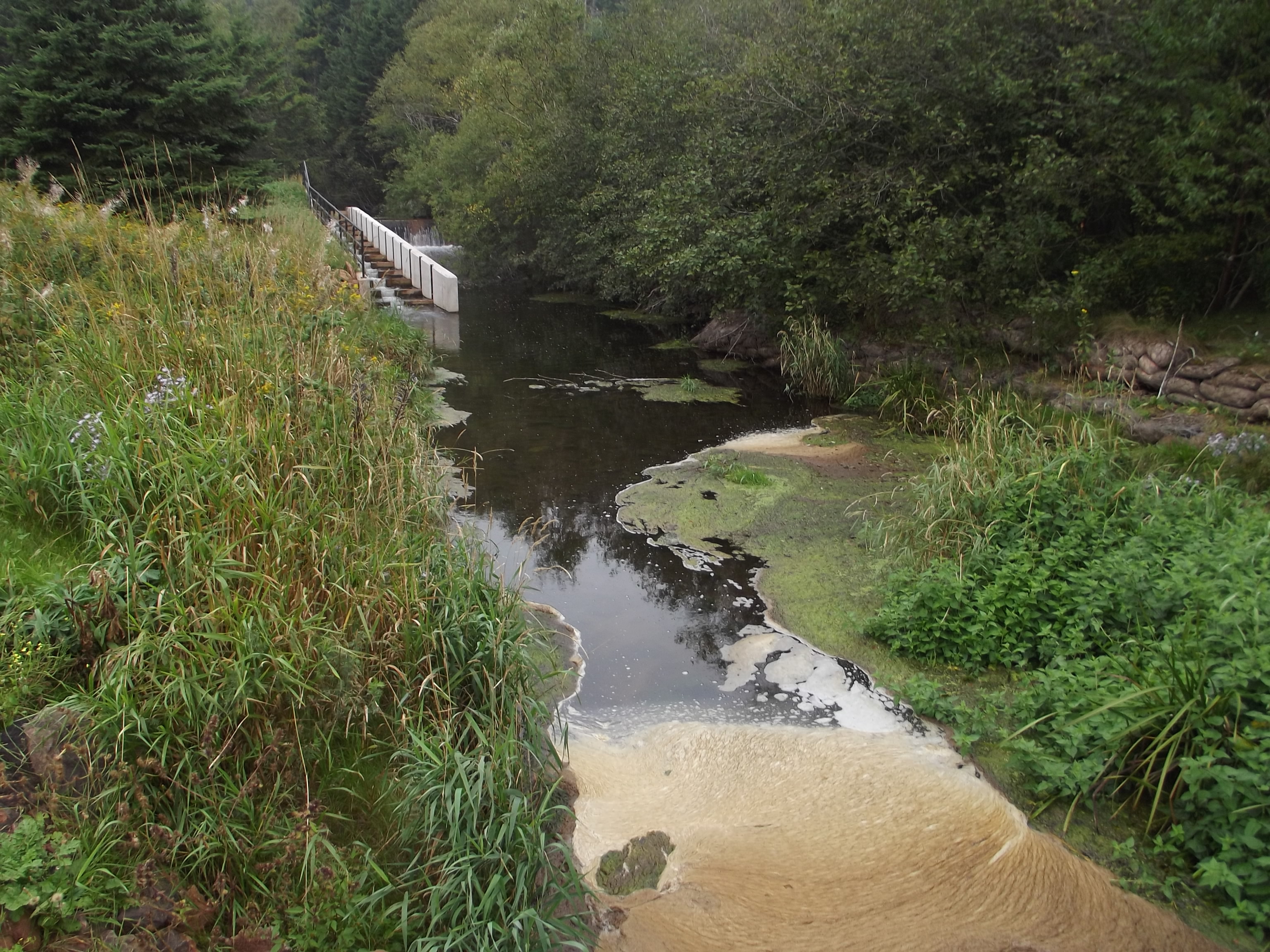
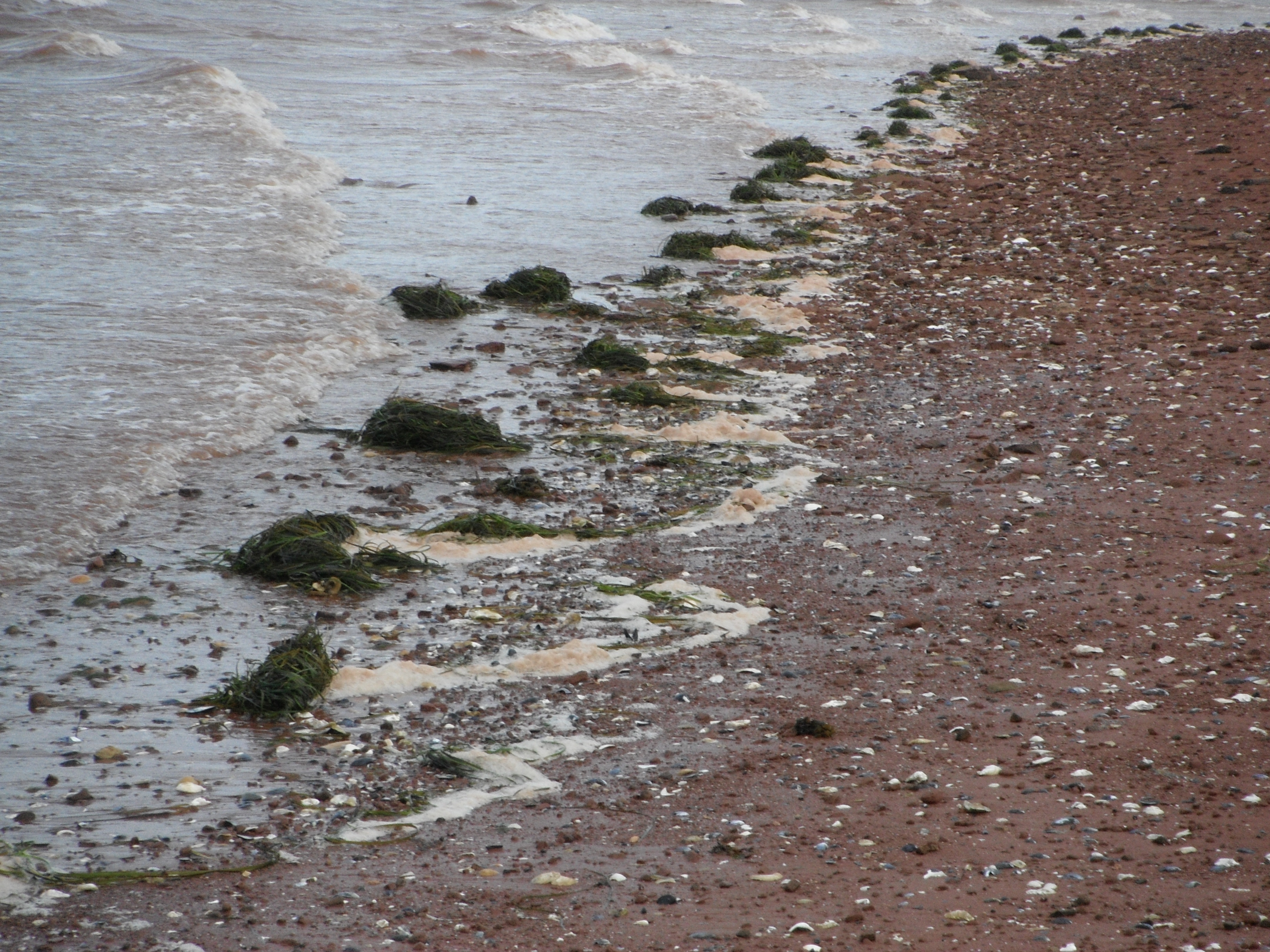
Orange or Brown Slime
Orange/brown slime is caused by harmless bacteria that form slimy or fluffy deposits. These deposits ‘rust’ when iron (in the bacteria) and oxygen (in the air) come together. This slime is most commonly found near springs, where, iron-rich groundwater comes to the surface. Slime can also form where there is an abundance of decaying plant or animal material.
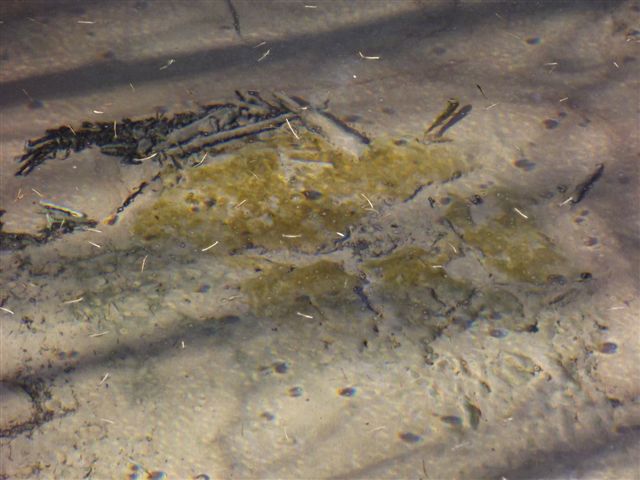
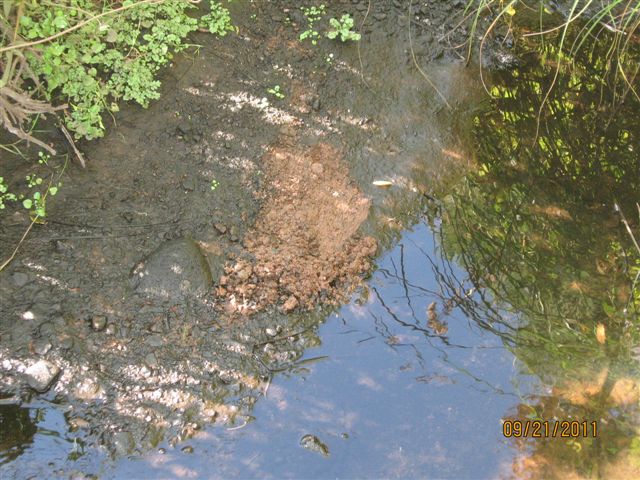
Green Coloured Water
Ponds and estuaries often turn green during the summer months. The colour, which can range from drab olive to ‘lime ricky’ green, is the result of a heavy growth (or bloom) of very small algae, known as phytoplankton. Blooms are often the result of nutrients in water and can be a concern to the environment.
A very bright turquoise green or blue–green colour to the water may indicate a bloom of blue–green algae (cyanobacteria). These blooms can also create a granular scum on the surface. If you suspect a blue–green algae bloom, report it to the Department at (902) 368-5044.
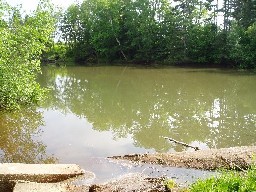
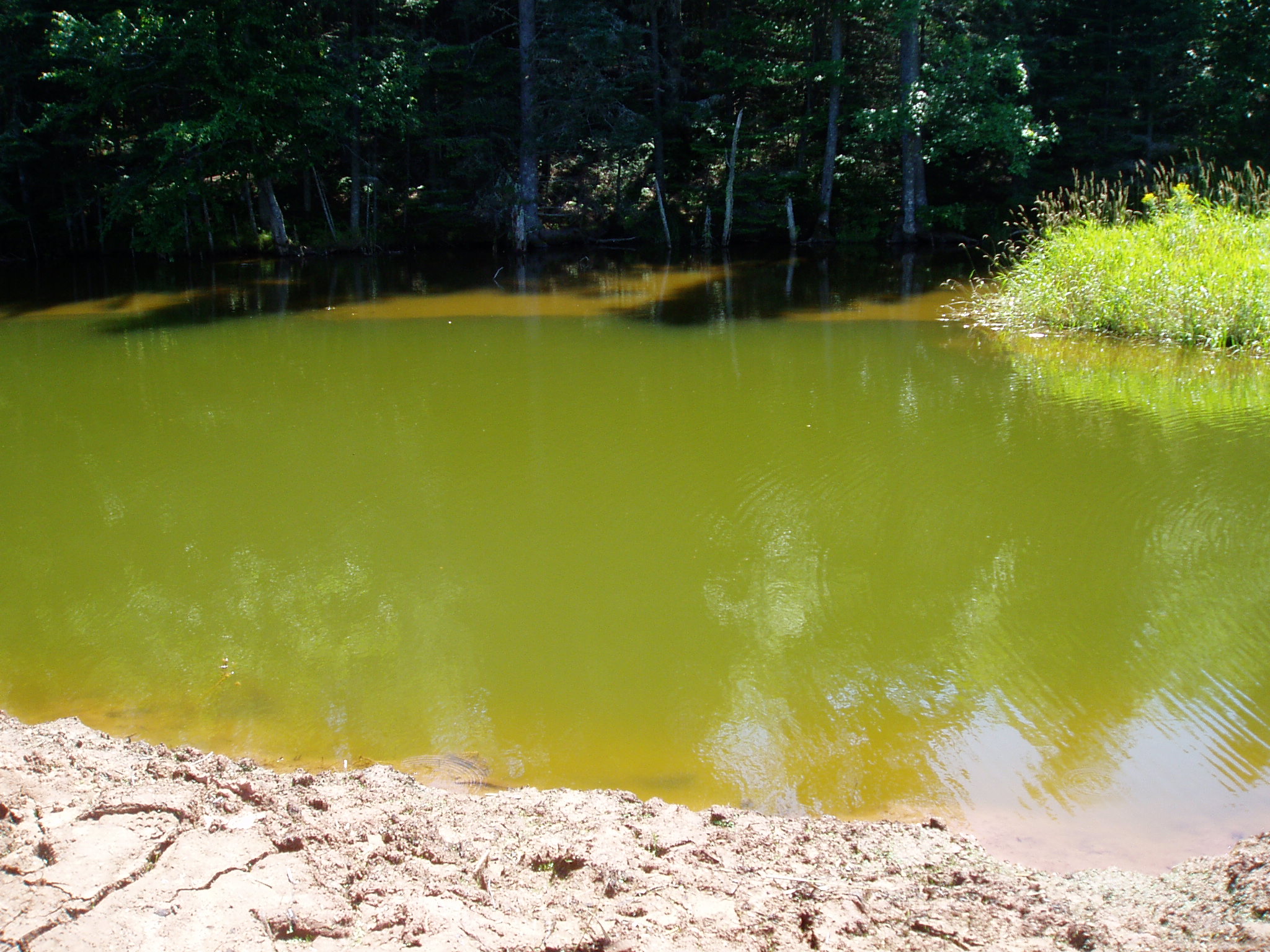
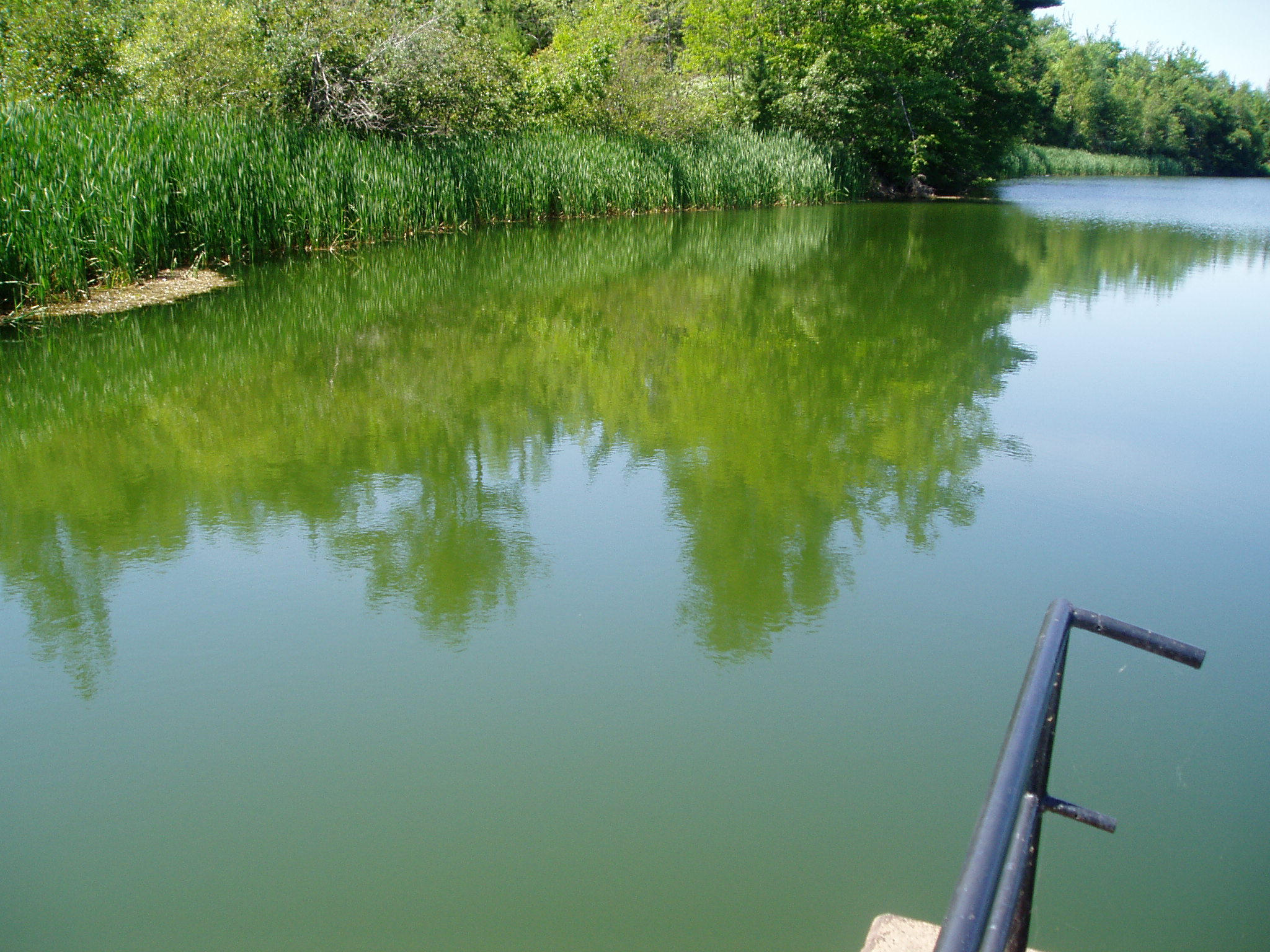
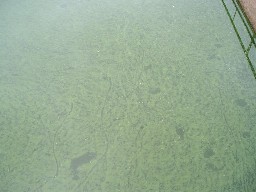
Green Moss or ‘Clouds’
Masses of filamentous algae (single algae cells that form long visible chains or filaments) can appear to form moss or clouds on the bottom of freshwater ponds. These algae masses are often slimy to the touch.
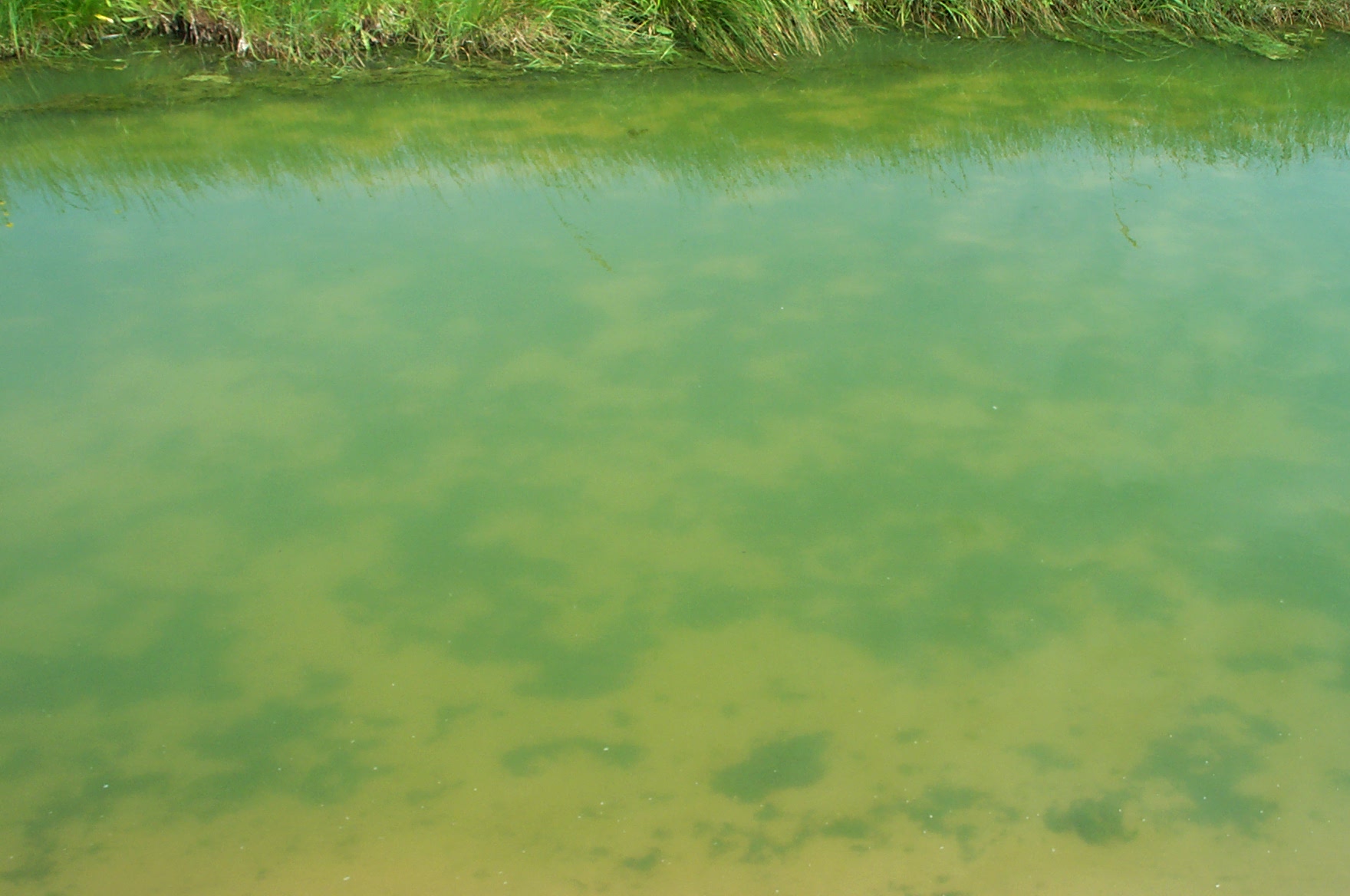
Mats or Green Scum
Mats or green scum are generally caused by a large growth (or bloom) of water plants or algae. Duckweed and filamentous algae are the most common causes in freshwater ponds. Sea lettuce forms mats in many Island estuaries.
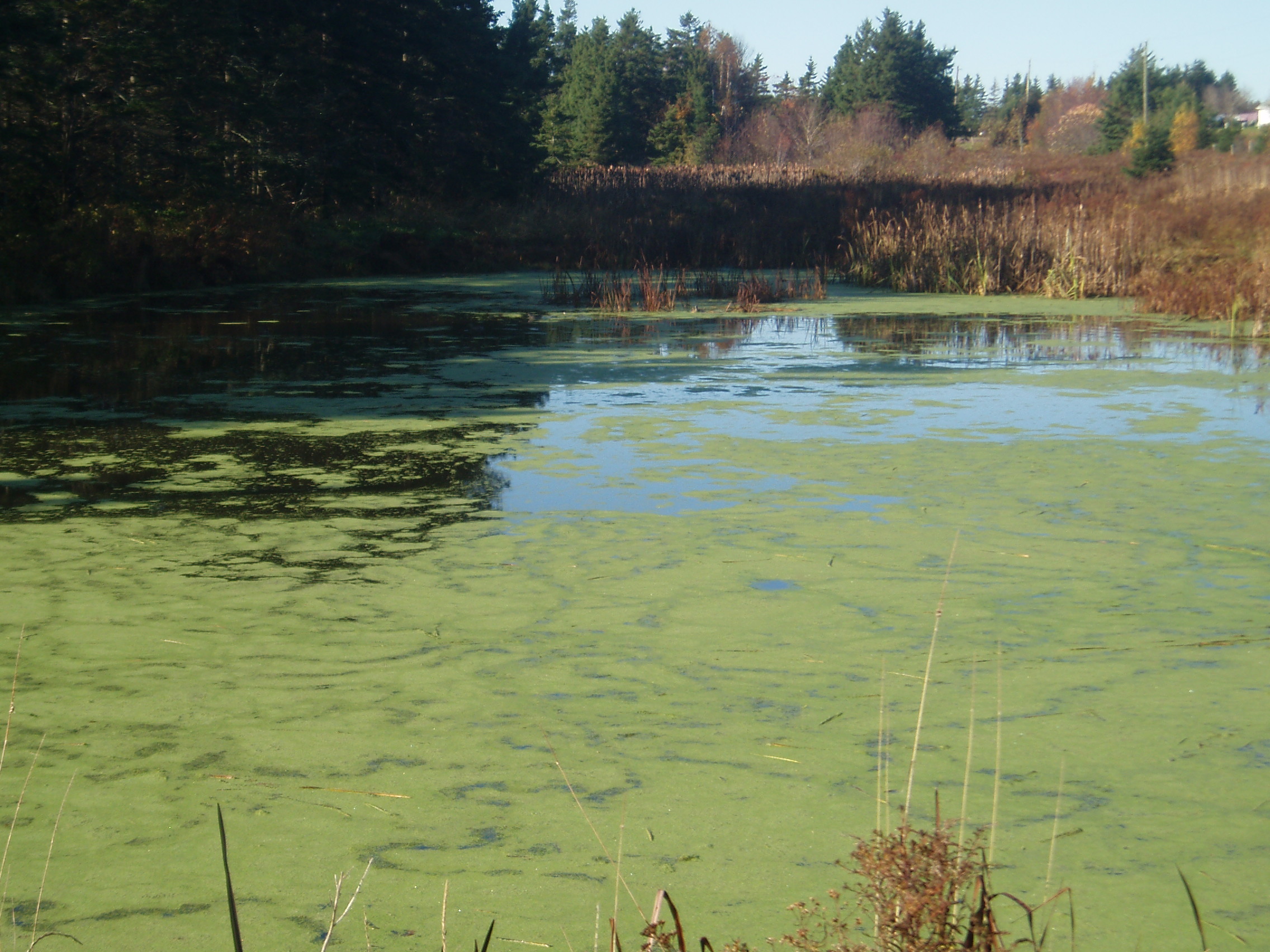
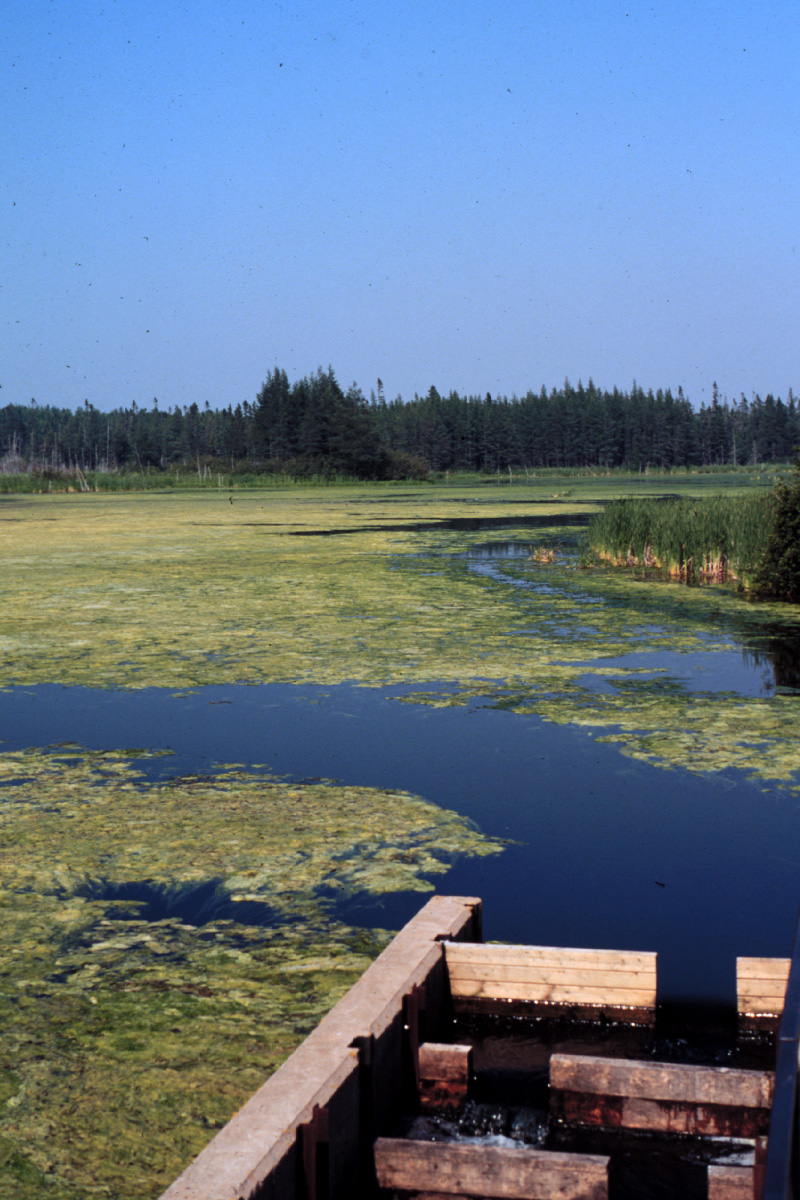
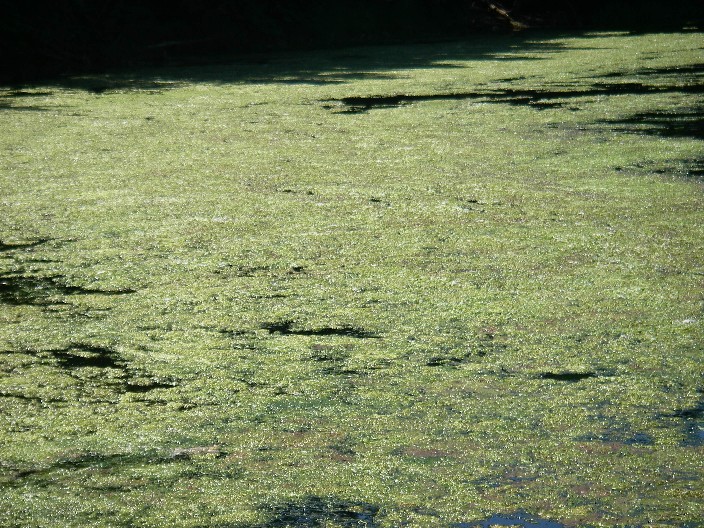
Red, Brown or Tea-coloured Water
Red, brown or tea-coloured (but otherwise clear) water is due to the presence of organic matter or plant pigments called tannins. The tannins actually ‘stain’ the water. Unlike the silt in muddy water, the tannin will not separate out if the water is left standing in a glass or bottle.
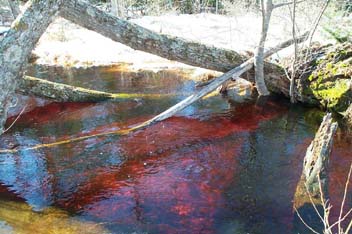
Milky White or Cloudy Green Coloured Water
Milky white or cloudy green coloured water in an estuary (the area where fresh and salt water mix) is generally a sign that an ‘anoxic event’ has occurred. These events happen when large amounts of algae or sea lettuce decompose. Decomposing plant material uses all, or most, of the oxygen in the water. Anoxic events result in a cloudy white to grey, or green discolouration of the water, as well as a rotten egg or rotten turnip type smell.
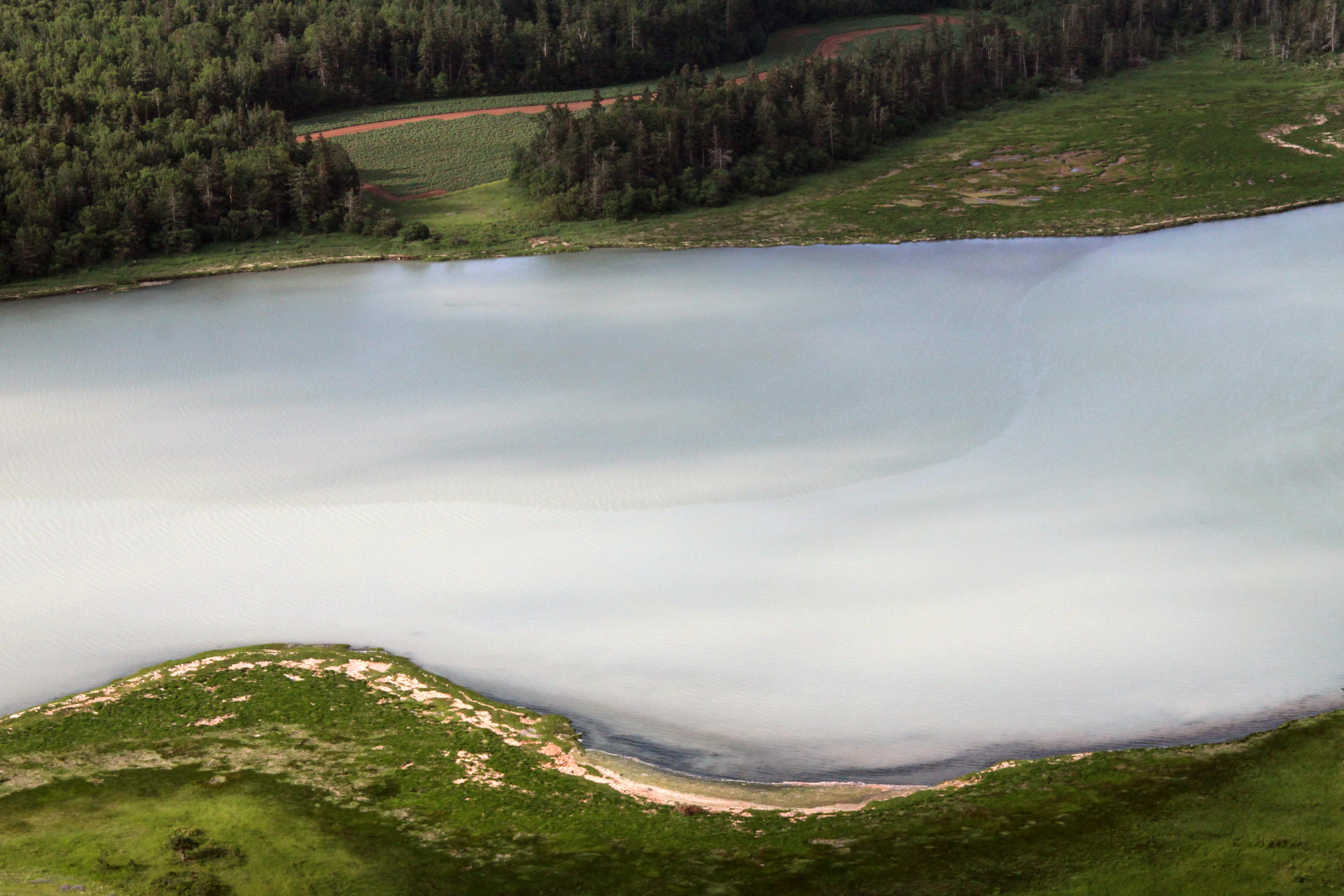
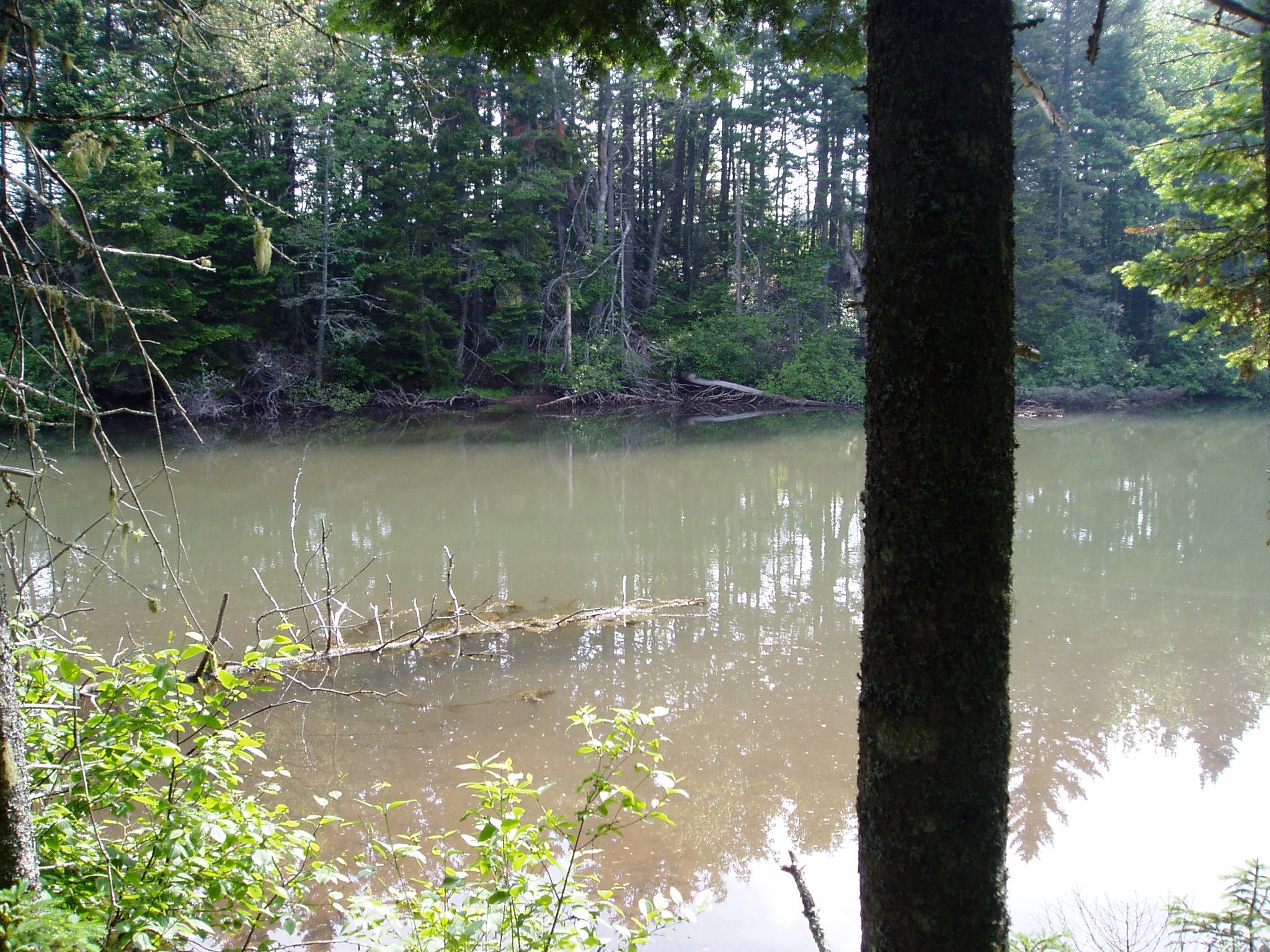
Report anoxic events to the Department at (902) 368-5044.
A list of estuaries with reported anoxic events since 2002 is available to download.
Oily Sheen
One common cause of an oily ‘sheen’ on the surface of water is the presence of harmless iron- or manganese-loving bacteria. These bacteria are often found in waterlogged soils. Decaying plant and animal material can also create an oily appearance. Oily sheens caused by natural causes have no petroleum odour. Sheens caused by petroleum will also flow back together again when disturbed by poking with a stick. Natural sheens will stay separated.
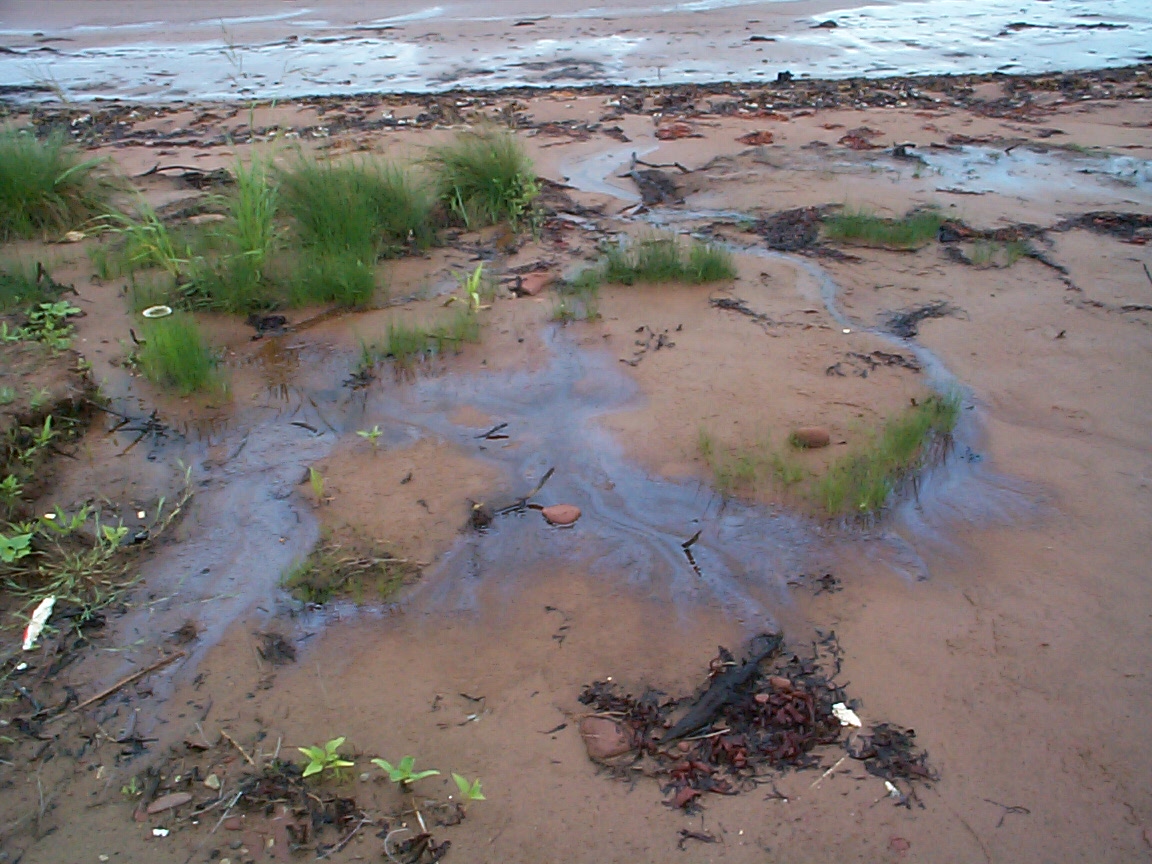
Yellow Scum/Slick
A pale yellow scum or slick is sometimes visible in Island waterways (including beaches) during the spring and early summer. Although it may look and behave like an oil slick, this scum is usually due to large amounts of tree pollen in the water. The pollen is slightly sticky, which makes it clump together. Because it is very light, it floats on the surface. Sometimes the scum will cover a large surface area of water. Islanders may notice that their cars and the surface of puddles are also covered with pollen.
